Socotra is an archipelago located in the Indian Ocean, off the coast of Yemen, comprising four islands and two islets. It is considered one of the most isolated places on earth and is known for its unique flora and fauna.
The islands are home to around 180 species of birds, including endemic and migratory species. The birdlife of Socotra is a significant attraction for bird enthusiasts and nature lovers alike. The bird species of Socotra are diverse and fascinating, making it one of the most important places for bird conservation in the world.
This article will explore some of the different bird species found on the islands and the reasons why Socotra is a prime location for birdwatching.
1. Black-Crowned Sparrow-Lark
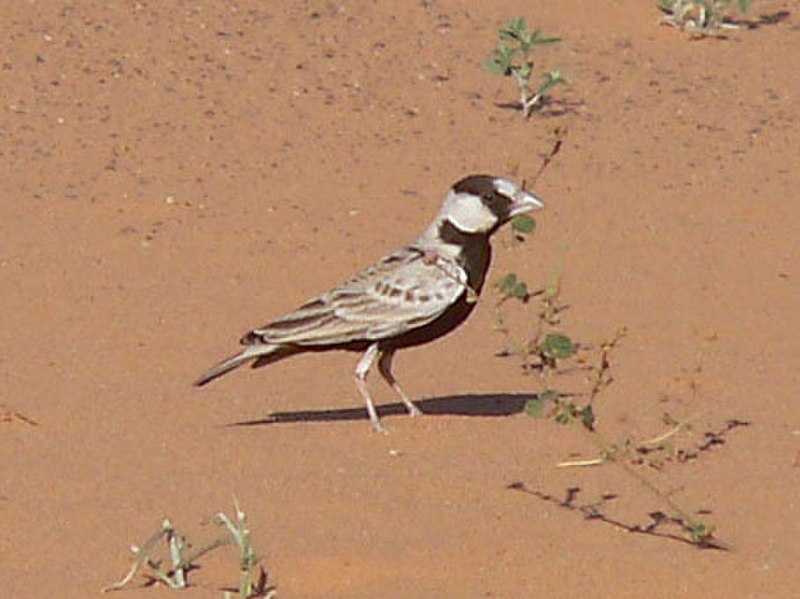
The black-crowned sparrow-lark is a species of lark found in northern Africa, the Middle East and north-western India. It resides in dry savanna habitats where it can be seen foraging for food on the ground.
The bird has an impressive white crest with distinctive black crown feathers that are only visible when viewed from above or behind.
Its brown upper parts mingle with its whitish underparts to provide excellent camouflage against predators, while its long legs allow it to run quickly across open fields if necessary.
Overall, this interesting little bird provides a fascinating sight as it hops around looking for food and flying through the air with grace and agility.Scientific classification:
| Kingdom | Animalia |
| Phylum | Chordata |
| Class | Aves |
| Order | Passeriformes |
| Family | Alaudidae |
| Genus | Eremopterix |
| Species | E. nigriceps |
Also Featured In: Native Pakistani Birds, Birds that Live in Rajasthan
2. Somali Starling
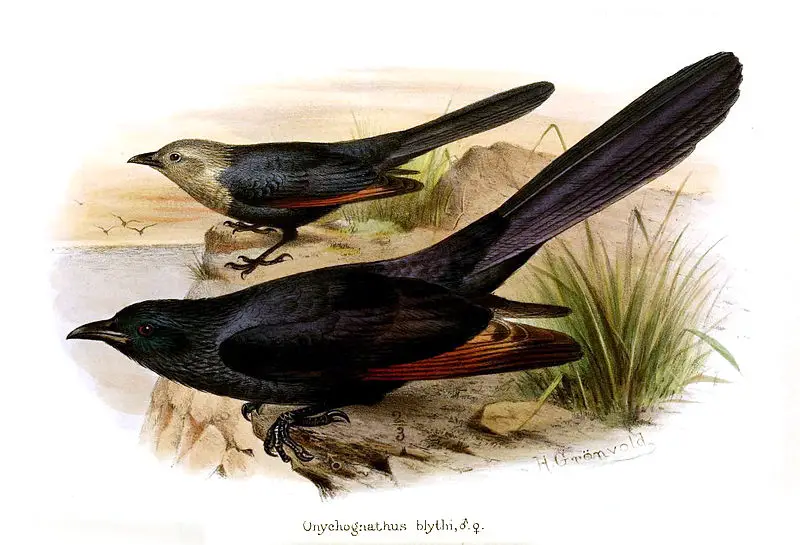
The Somali starling is a beautiful species of bird belonging to the family Sturnidae. It is native to Djibouti, Eritrea, Ethiopia, Somalia and Yemen and can be found inhabiting bushy and shrubby areas in northern Ethiopia’s Degua Tembien district.
These birds are quite small with glossy black feathers on their heads as well as brownish upperparts while they have white underparts which contrast nicely against its darker body. They also feature striking yellow eyes; giving them an almost cartoon-like appearance.
The Somali starling has been classified by the IUCN Red List as Least Concern due to its widespread range across East Africa but it still faces threats from habitat destruction caused by human activities such as farming or logging.Scientific classification:
| Kingdom | Animalia |
| Phylum | Chordata |
| Class | Aves |
| Order | Passeriformes |
| Family | Sturnidae |
| Genus | Onychognathus |
| Species | O. blythii |
Also Featured In: Common Ethiopian Birds,
3. Socotra Cormorant
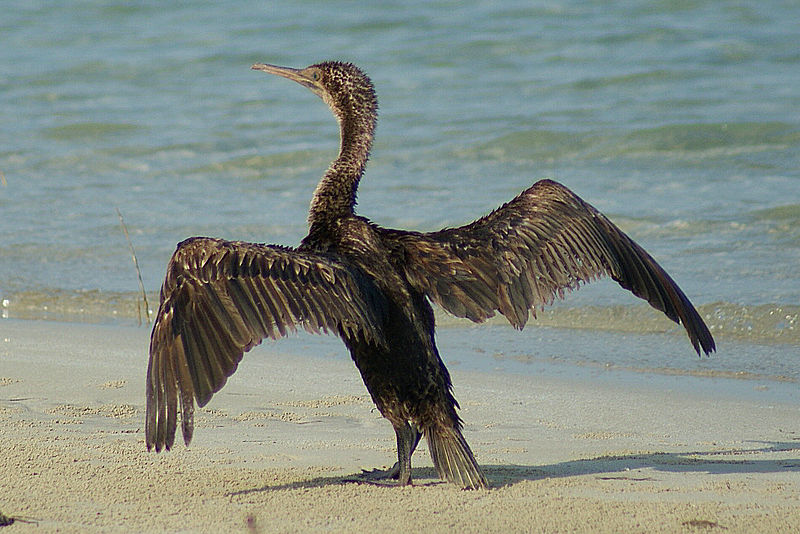
The Socotra cormorant is a threatened species of bird endemic to the Persian Gulf and south-east coast of the Arabian Peninsula. It has also been sighted in the Red Sea, although it is not known to breed there.
The bird has grey feathers with white patches on its wings, neck and tail tip. Its beak and throat are black while its face and legs are yellowish-white.
Despite being named for Socotra Island (Yemen), where it used to live before becoming endangered due to hunting, nesting destruction by humans and predation by feral cats; it was only confirmed in 2005 that this species breeds here again today.Scientific classification:
| Kingdom | Animalia |
| Phylum | Chordata |
| Class | Aves |
| Order | Suliformes |
| Family | Phalacrocoracidae |
| Genus | Phalacrocorax |
| Species | P. nigrogularis |
Also Featured In: Common Birds in Saudi Arabian,
4. Jouanin’s Petrel
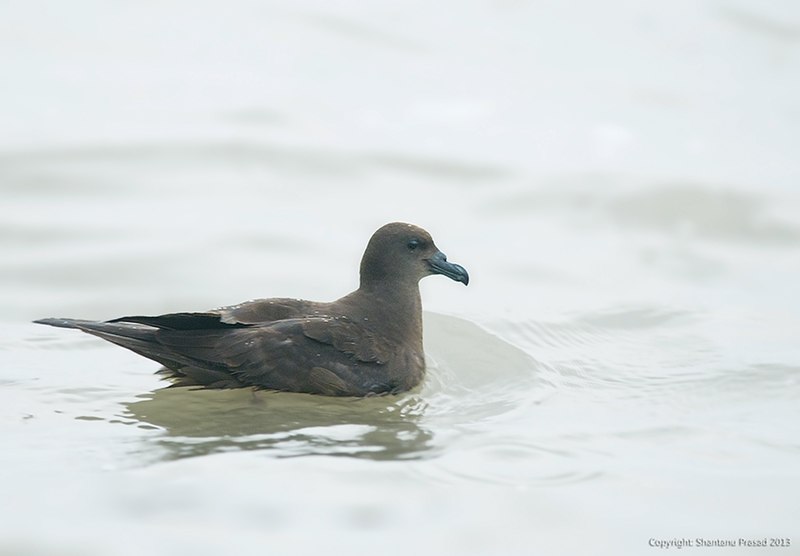
Jouanin’s petrels are seabirds belonging to the Procellariidae family. They inhabit open and shallow seas in the northwestern Indian Ocean, with their breeding grounds located on Socotra Island.
These birds have a distinctive blackish-brown plumage that covers most of its body except for the white rump and tail feathers which stand out against it.
Jouanin’s petrels typically feed on small fish, squid, krill or other crustaceans by diving into water from flight or swimming underwater using their webbed feet as paddles.
The species is considered endangered due to threats such as overfishing and oil spills in some areas where they live. Conservation efforts include reducing human disturbances near nesting sites so these lovely creatures can continue to thrive.Scientific classification:
| Kingdom | Animalia |
| Phylum | Chordata |
| Class | Aves |
| Order | Procellariiformes |
| Family | Procellariidae |
| Genus | Bulweria |
| Species | B. fallax |
5. Socotra Starling
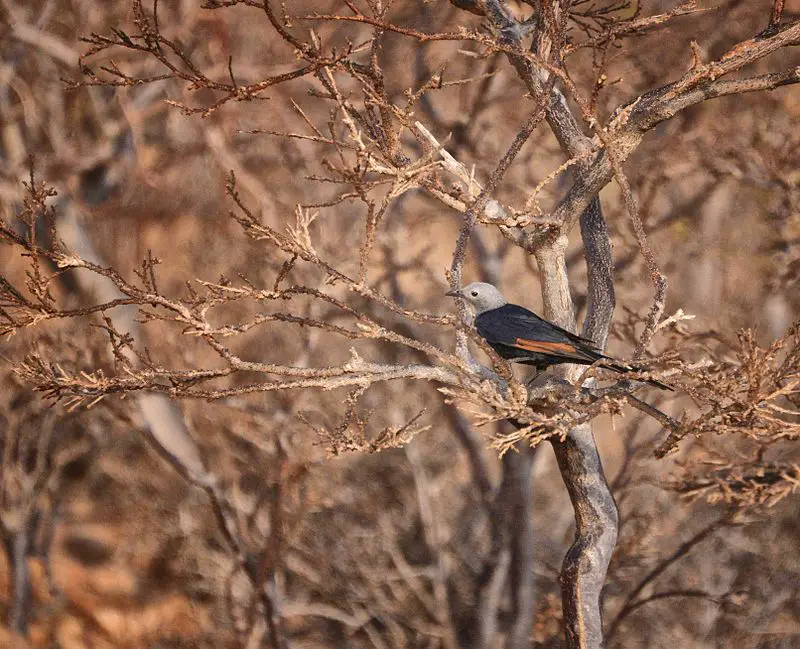
The Socotra starling is a species of bird that belongs to the family Sturnidae and is natively found in Yemen. It mostly resides in subtropical or tropical dry forests, lowland forests, shrublands as well as rural gardens which are threatened due to habitat loss.
With its brownish grey body plumage with bright blue eyes, this medium-sized passerine has adapted exceptionally well to its environment and can be spotted perching on trees or flying over them during the day looking for food like fruits and small insects.
Conservation efforts are underway by local organisations so that these birds remain safe from threats posed by human activities such as deforestation.Scientific classification:
| Kingdom | Animalia |
| Phylum | Chordata |
| Class | Aves |
| Order | Passeriformes |
| Family | Sturnidae |
| Genus | Onychognathus |
| Species | O. frater |
6. Socotra Sparrow
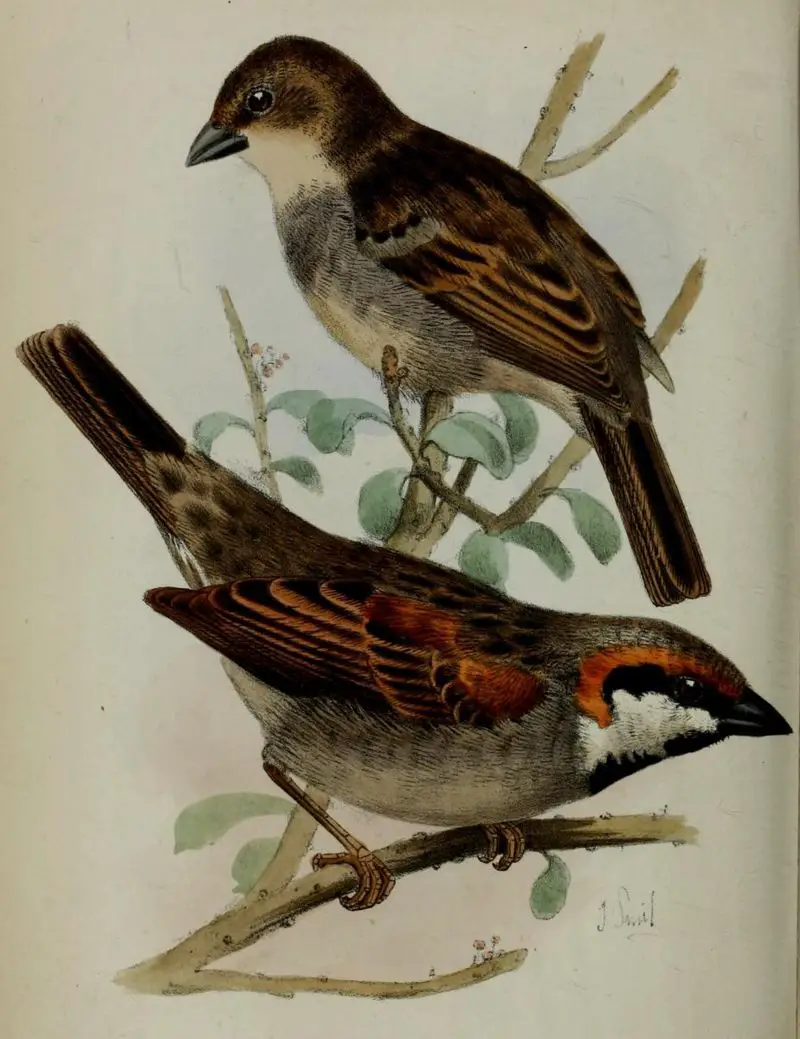
The Socotra sparrow is a unique species of passerine bird that can only be found on the islands of Socotra, Samhah and Darsah in the Indian Ocean.
It has been identified by BirdLife International as distinct from some other similar African birds, due to its distinctive size and colouration.
This small brownish-grey bird features white stripes surrounding its eyes and dark barring across it�s back.
The socotra sparrow feeds mainly on seeds which can usually be found among shrubs or grasslands near water sources such as streams or rivers nearby their nest sites.
Despite being known for centuries they remain poorly studied, with very little information available about their ecology or behaviour patterns during breeding seasonScientific classification:
| Kingdom | Animalia |
| Phylum | Chordata |
| Class | Aves |
| Order | Passeriformes |
| Family | Passeridae |
| Genus | Passer |
| Species | P. insularis |
7. Nubian Nightjar
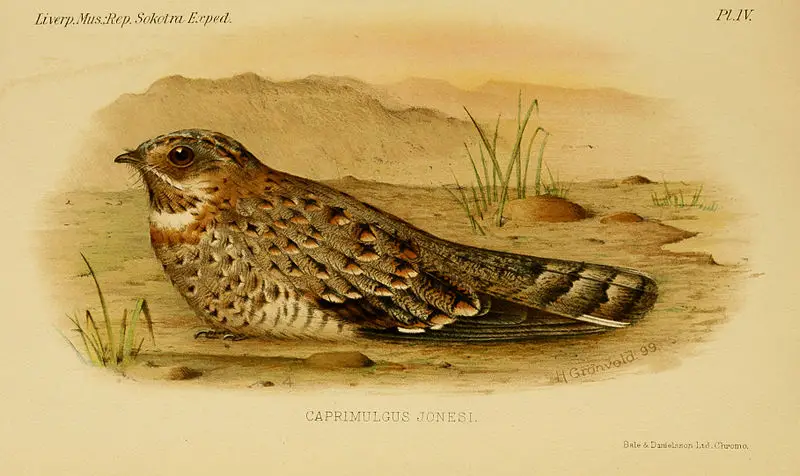
The Nubian nightjar is a species of nightjar found in East Africa and the Middle East. With its large eyes, beak, and wingspan of 20-22 cm it stands out among other birds in the region.
At night this bird can often be seen flying close to the ground as it hunts for insects with its acute vision.
It has an elegant grey, brown and white plumage which helps camouflage it during daylight hours when roosting on tree branches or lying flat against rocks or barren soil.
Furthermore, due to their nocturnal nature they are quite hard to spot even when active so if you want to catch a glimpse of one make sure you’re up early at sunrise.Scientific classification:
| Kingdom | Animalia |
| Phylum | Chordata |
| Class | Aves |
| Order | Caprimulgiformes |
| Family | Caprimulgidae |
| Genus | Caprimulgus |
| Species | C. nubicus |
Also Featured In: Birds of Israel,
8. Lichtenstein’s Sandgrouse
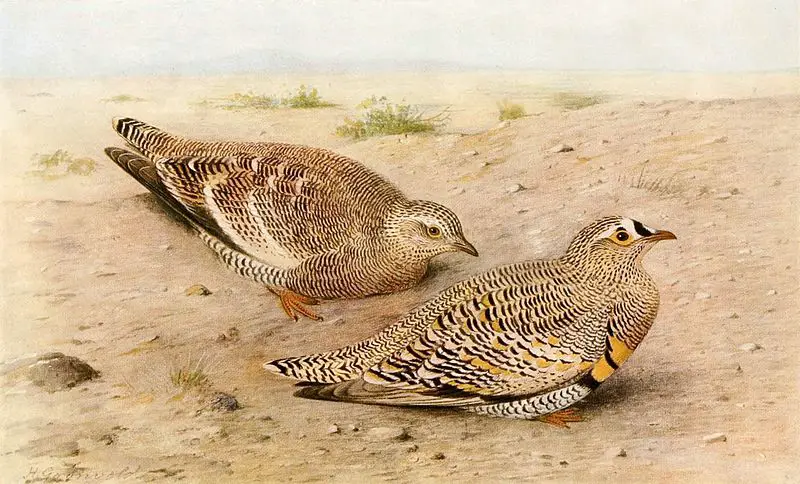
Lichtenstein’s sandgrouse is a species of bird found in various parts of Africa and the Middle East.
Its range stretches from Kenya near the equator to Afghanistan, with stops in Algeria, Chad, Djibouti, Ethiopia and Somalia along the way.
These birds are nomadic creatures who mostly come out at night; they drink water before dawn or after dusk.
The species was named for its discoverer Martin Lichtenstein who first described it back in 1823. They live mainly on seeds but also consume insects such as grasshoppers or termites if necessary for survival purposes.
Sandgrouses make their nests directly on bare ground where there’s minimal vegetation – usually dry deserts or semi-desert areas – although some can be spotted occasionally even in wetter habitats like riverbanks too.Scientific classification:
| Kingdom | Animalia |
| Phylum | Chordata |
| Class | Aves |
| Order | Pterocliformes |
| Family | Pteroclidae |
| Genus | Pterocles |
| Species | P. lichtensteinii |
Also Featured In: Djibouti birds,
9. Socotra Bunting
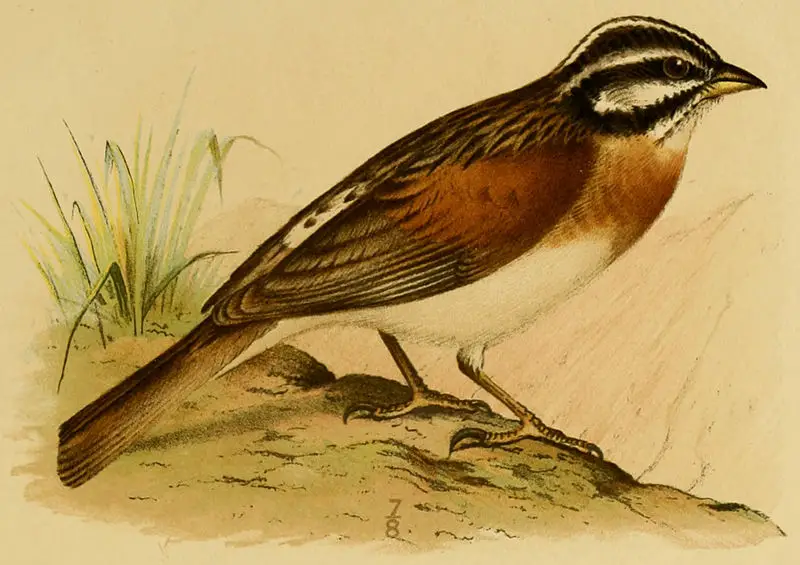
The Socotra bunting is a unique bird species found exclusively in Yemen. This bird is a member of the Emberizidae family and is threatened by habitat loss due to its shrinking natural habitat of subtropical or tropical high-altitude shrubland.
Its striking appearance, with a rust-colored plumage and a bold white stripe on its head, makes it stand out amongst other bird species.
It is also known to build nests in Socotra, as illustrated by P. J. Smit. Furthermore, the Socotra subspecies insularis, as depicted by Henrik Grönvold, showcases the beauty of this exceptional bird.
The conservation of this species is vital to maintain biodiversity and the ecosystem within Yemen.Scientific classification:
| Kingdom | Animalia |
| Phylum | Chordata |
| Class | Aves |
| Order | Passeriformes |
| Family | Emberizidae |
| Genus | Emberiza |
| Species | E. socotrana |
10. Socotra Cisticola
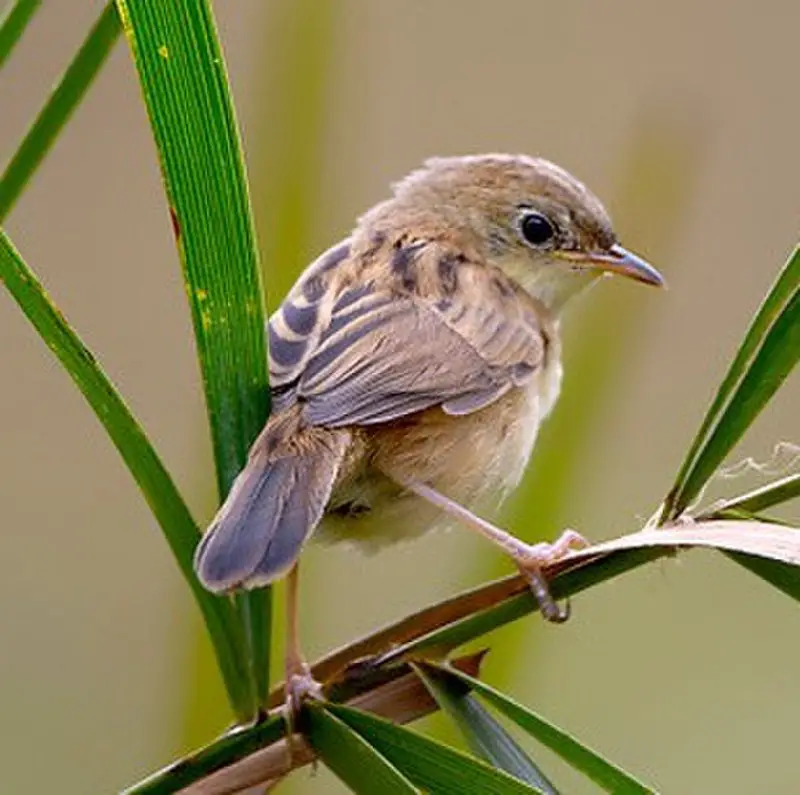
The Socotra cisticola, also known as the island cisticola, is a unique bird found only on Socotra Island in the Arabian Sea. It belongs to the family Cisticolidae and prefers living in subtropical or tropical dry shrubland and high-altitude grassland habitats.
Unfortunately, this bird species is facing a significant threat due to habitat loss caused by human activities.
Despite its small size, this bird plays a crucial role in maintaining the ecosystem of the island. It is essential to protect this endemic species to ensure the balance of the environment.
The Socotra cisticola’s unique features, behaviors, and characteristics make it a fascinating subject for bird enthusiasts and researchers, making it important to study and conserve this bird for future generations to enjoy.Scientific classification:
| Kingdom | Animalia |
| Phylum | Chordata |
| Class | Aves |
| Order | Passeriformes |
| Family | Cisticolidae |
| Genus | Cisticola |
| Species | C. haesitatus |
11. Socotra Warbler
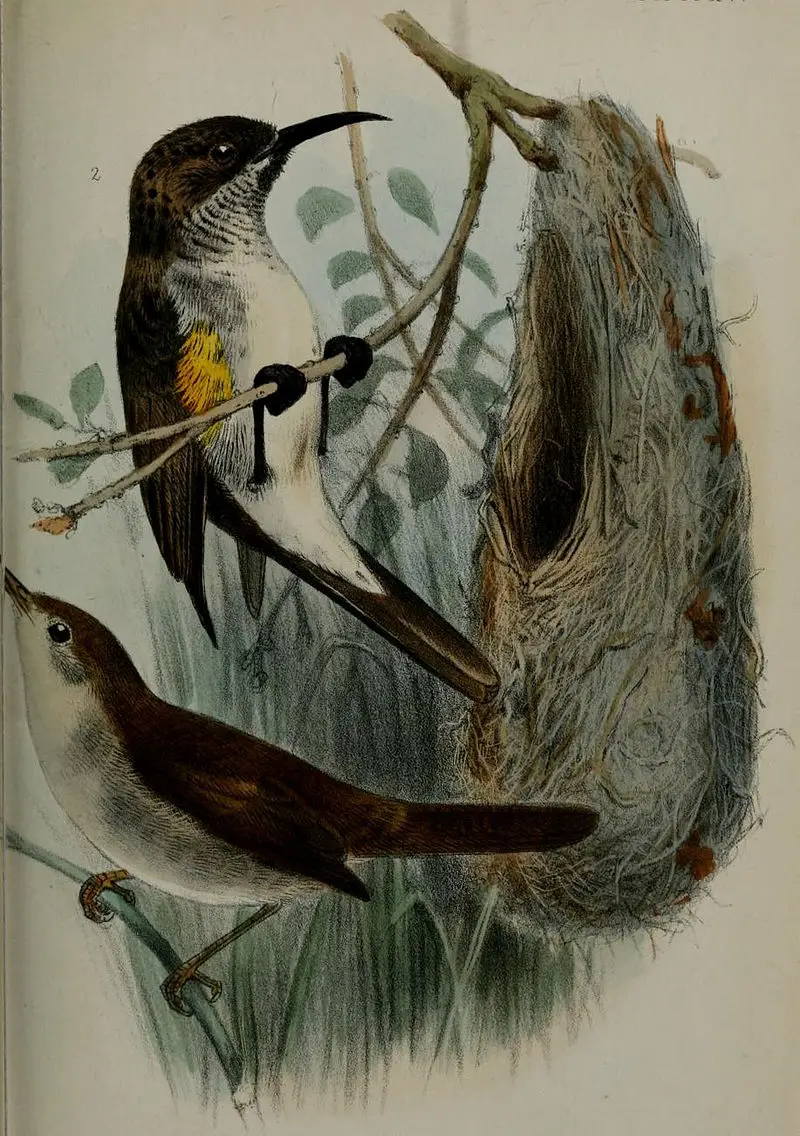
The Socotra warbler is a bird that belongs to the family Cisticolidae and is unique in the genus Incana. It is only found in Socotra and lives in dry shrubland and high-altitude shrubland.
Sadly, its habitat is continually shrinking and it is at risk of extinction because of the habitat loss. The bird has a distinctive look and is one of the famous birds in the bird-watching world.
Being endemic to Socotra makes it even more special, as it has adapted to live solely in that environment.
If we do not address the issue of habitat loss, we may lose this rare bird species from our planet forever, so we should work towards conserving its habitat to protect it.Scientific classification:
| Kingdom | Animalia |
| Phylum | Chordata |
| Class | Aves |
| Order | Passeriformes |
| Family | Cisticolidae |
| Genus | Incana Lynes, 1930 |
| Species | I. incana |
12. Socotra Golden-Winged Grosbeak
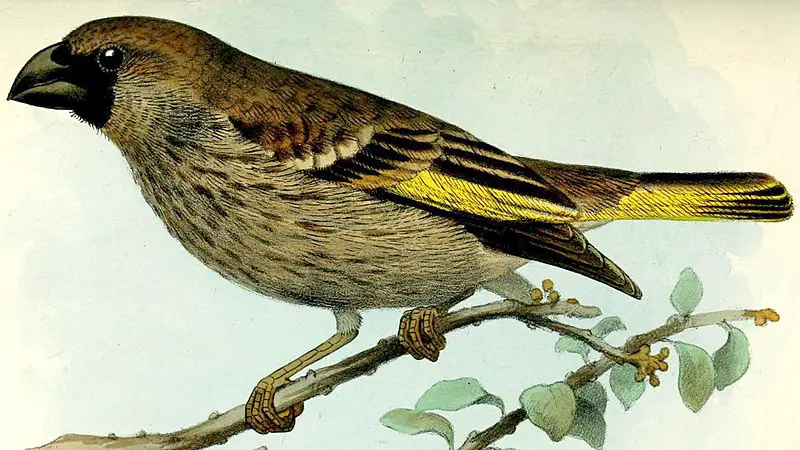
The Socotra golden-winged grosbeak, also known as the Socotra grosbeak, is a type of finch found on Socotra Island in the Indian Ocean. It is considered to be an endemic species, meaning it is found only in that specific location.
Some experts believe that the Socotra grosbeak is the only species in the Rhynchostruthus genus, while others consider it to be one of several subspecies under the golden-winged grosbeak umbrella.
This bird has distinctively golden feathers on its wings, which helps to set it apart from other finch species.
Due to its unique location and limited distribution, the Socotra golden-winged grosbeak is considered to be a rare and valuable bird species, and efforts are made to protect its habitat and population.Scientific classification:
| Kingdom | Animalia |
| Phylum | Chordata |
| Class | Aves |
| Order | Passeriformes |
| Family | Fringillidae |
| Subfamily | Carduelinae |
| Genus | Rhynchostruthus |
| Species | R. socotranus |
13. Forbes-Watson’s Swift
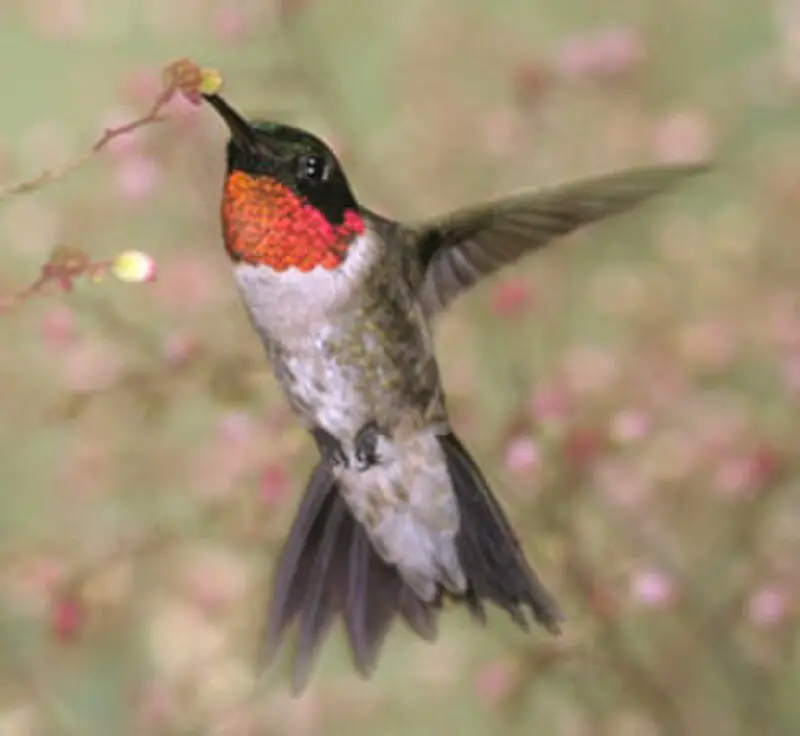
Forbes-Watson’s swift, a member of the Apodidae family, is found in coastal regions of Somalia, parts of the Arabian Peninsula, and on the island of Socotra.
During the breeding season, this swift thrives in these areas, but in the non-breeding season, it can be spotted as far south as coastal Mozambique. Known for its unique features, the bird’s physical appearance is fascinating to many.
This swift is widely recognized as a migratory bird with distinct breeding and non-breeding habitats. With its long wings and agile movements, Forbes-Watson’s swift has a unique flying ability that helps it maneuver around its surroundings with ease.
Despite being found in limited areas, this species continues to fascinate bird enthusiasts and researchers alike.Scientific classification:
| Kingdom | Animalia |
| Phylum | Chordata |
| Class | Aves |
| Clade | Strisores |
| Order | Apodiformes |
| Family | Apodidae |
| Genus | Apus |
| Species | A. berliozi |
14. Cinnamon-Breasted Bunting
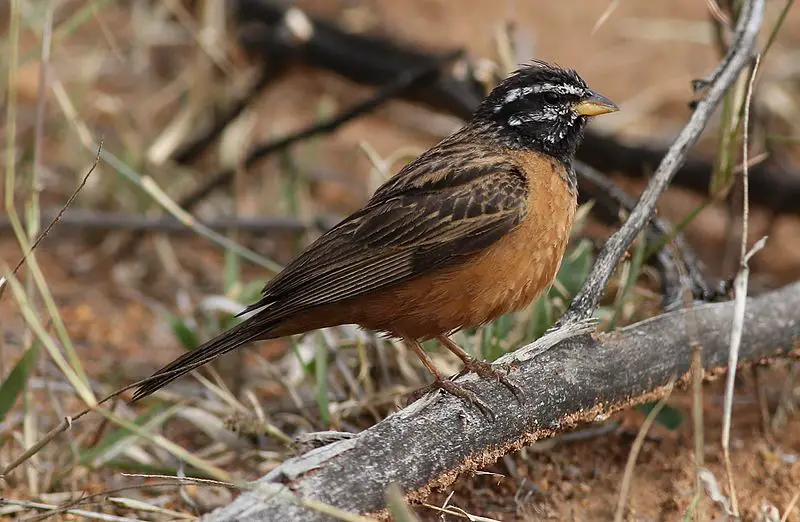
The Cinnamon-breasted bunting is a bird species belonging to the family Emberizidae. It is commonly found in various locations in Africa south of the Sahara.
This rock-bunting is also known as Cinnamon-breasted rock-bunting. This bird species was identified by Scottish zoologist Andrew Smith in 1836 with the current binomial name Emberiza tahapisi.
Its name is derived from its cinnamon-colored breast. It is an active bird that enjoys hopping around on rocks or on the ground searching for food. The male species of Cinnamon-breasted bunting is known for its bright and colorful feathers.
They feed on seeds, insects, and spiders. These birds typically breed during the rainy season and are known for their territorial behavior during breeding.
Despite being abundant across Africa south of the Sahara, the bird is not currently endangered.Scientific classification:
| Kingdom | Animalia |
| Phylum | Chordata |
| Class | Aves |
| Order | Passeriformes |
| Family | Emberizidae |
| Genus | Emberiza |
| Species | E. tahapisi |